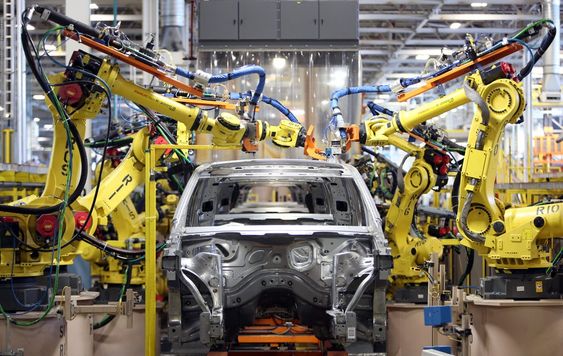In the last ten years, economic, technological, and policy factors changed the Nigerian auto industry significantly. Even though there have been some problems, the industry has grown steadily, with more cars being made and sold, and related industries like auto parts manufacturing growing as well.
The Challenges
The Nigerian auto industry still has to deal with a number of problems. One of the biggest problems is that the auto industry doesn’t have enough infrastructure and support services, such as roads, ports, and power. This makes it hard for businesses to move goods and take care of their production facilities.
Likewise, Nigeria’s vehicle market is hard to measure because of smuggling, illegal imports of used cars, and a lack of reliable data. Difficulties with getting licences and figuring out who owns a car also add to this problem.
According to the most recent data from the National Bureau of Statistics, there were 11.8 million vehicles in Nigeria in 2018. 39% (4.6 million) were privately owned, 56% (6.7 million) were commercial vehicles, 1.1% (135,000) were government vehicles, and 0.4% (5,834) belonged to diplomats.
Nigeria, with a population over 200 million, has to import cars from other countries because it doesn’t manufacture enough cars on its own. According to the U.S. Census Bureau, the United States sent about $701 million worth of passenger cars to Nigeria in 2020.
Furthermore, when the Automotive Industry Development Plan (NAIDP) was started in 2014, it caught the attention of some of the biggest car companies in the world and led to the return of small-scale vehicle assembly in the country. The National Automotive Design and Development Council (NADDC) says that there are 31 licenced car, truck, and bus manufacturers in Nigeria that can make a total of 205,000 vehicles a year.
But only about seven companies are coming together because there are huge gaps in funding, infrastructure, and capacity. Because of these problems, automakers are now moving to neighbouring countries, Ghana, to set up assembly plants there. They plan to ship the cars to Nigeria from these plants.
Speaking at the 26th edition of the Nigerian Economic Summit organised by the Nigerian Economic Summit Group (NESG) in November 2020, Yemi Osinbajo, the Vice President, said that the country needs 720,000 vehicles each year, but only 14,000 can be made in Nigeria.
This has further fueled people bringing cars in from other countries, mostly used ones and according to the NADDC, the country spends about $8 billion on imported vehicles yearly.
Even though cars and their parts are not on the Central Bank’s list of 41 items that can’t get foreign exchange, the fact that it’s hard for assemblers to get foreign exchange has led to higher prices and less consumer demand. Corporate organisations, which buy the most new cars, have cut back on purchases or put them off. This means that their fleet won’t be replaced for another four to seven years.
The Growth
Even with these problems, the Nigerian auto industry has grown steadily over the last ten years, and this is likely to continue. With more money spent on infrastructure, better rules and regulations, and a stronger domestic supply chain, the Nigerian auto industry could become a major player on the global market.
The country’s auto industry has grown a lot because of the country’s economy. In Q2 2022, the Nigeria’s GDP at N45 trillion, retained its position as the largest economy in Africa.
In the last ten years, a number of Nigerian companies, such as Innoson Vehicle Manufacturing Company, Nord Automobile, Peugeot, Volkswagen and others, have started making cars in Nigeria, using parts and pieces that were imported. This has led to more cars being made and sold and more jobs being made in the auto parts manufacturing sector.
Through different policies and programmes, the Nigerian government has also helped the auto industry grow. For example, the Nigerian Automotive Industry Development Plan (NAIDP) was started in 2013 to encourage the local production and assembly of vehicles and the growth of a local auto parts industry..
Between 2004 and 2014, the number of cars that were brought into the country grew quickly. However, between 2015 and 2017, the number of cars that were brought in dropped by a lot. This was because of the new automotive policy, which raised import taxes on cars by 70%, and a recession that happened during that time. In 2017, less than 7,000 brand-new cars were imported into Nigeria from other countries.
In February 2021, the NADDC and the Stallion Group showed off the Hyundai Kona, the first locally made electric car. The head of the National Automotive Design and Development Council said that the goal is for 30% of passenger cars in the U.S. to be powered by electricity by 2025.
Major auto brands in Nigeria in the last ten years
Japanese brands control almost a third of the new and used vehicle market because people think they are reliable. More than 60% of the market for used cars is in the United States, and most of them are Japanese brands, with Toyota at the top of the list, according to the US Department of Commerce.
Hyundai and Kia have become more serious competitors to Toyota because of their low prices and better reputations for quality. Up to half of all new cars sold in Nigeria are made by these three Asian brands.
Also, a lot of the used cars on Nigerian roads come from the US, Germany, Netherlands, and Belgium. The Ford Explorer, an American auto brand is quickly becoming popular because of its design and how reliable it is.
Similarly, nearly half of the used trucks that Nigeria imports come from the United States. The Mack brand is the most popular because it is thought to be the most rugged and long-lasting.
In 2020, the United States sent trucks and buses to Nigeria worth $190 million, according to data from the Census Bureau. This is a big jump from the $82 million and $105 million reported in 2018 and 2019, respectively.
Some of the rail projects that are supposed to connect the country’s commercial cities such as Lagos-Calabar coastal railway project, Abuja-Itakpe-Warri rail line project, Port-Harcourt-Maiduguri rail line rehabilitation project are still being built and are not yet fully operational. So, commercial heavy duty and light duty trucks have continued to move most dry and wet cargo from one part of the country to another.
In addition, spare parts are in demand because there are more and more used cars in Nigeria. According to the U.S. Census Bureau, the United States exported more than $163 million worth of auto parts and accessories to Nigeria in 2020. Industry contacts say that the United States has a competitive edge when it comes to car care products and also sends about 40% of used car parts to Nigeria. The US Department of Commerce (https://www.trade.gov) says:
Journey to the next decade
In August 2022, the National Agency for Science and Engineering Infrastructure (NASENI) of the Federal Government signed a Memorandum of Understanding (MoU) with Israeli and Japanese companies to start putting together and making smart, green, electric, and environmentally friendly cars.
Mohammed Haruna, Executive Vice Chairman of NASENI, said that the project, which the agency hopes to start this year, would lead to the production of electric cars made in Nigeria in the near future.
“NASENI has come into this with the right people by her side. “Japanese and Israeli companies’ technologies have been tested and are well-known,” Haruna said. “But most importantly, Nigeria won’t just use this technology; we’re here to make sure we domesticate, produce, and make it in Nigeria. We are grateful and happy about this partnership, and we promise Nigerians that the auto industry will never be the same after this.”
In his speech, Michael Freeman, Israel’s ambassador to Nigeria, said he was sure that a mix of Israeli, Japanese, and Nigerian technologies would help the country’s transportation and environmental sectors deal with the many problems they face.
“What makes this project unique is that it is a timely project that brings together Israeli technologies, Japanese technologies, and Nigerian entrepreneurship and innovation to make a project that will work wonderfully,” Freeman said. “We are talking about bringing electric motorcycles to Nigeria. This would be a green, eco-friendly programme. It gives people a cheap and safe way to get around, and it even has a way to make sure that motorcycles are only used for legal and appropriate things.”
The project aims to reach Goal Seven of the Sustainable Development Goals (SDGs) for 2030, which is to improve international cooperation and make it easier to access research and technology on clean energy.
For Nigeria’s auto policy to work, parts like batteries, belts, lights, and tyres need to be made more available. Also, there are already holes in repair, which will become even more obvious as local manufacturing grows. We will need to improve our skills, train skilled workers, and make sure we have enough spare parts to close this gap.
In conclusion, the Nigerian auto industry has changed a lot in the last ten years because of economic, technological, and policy factors. The industry has grown steadily, with more cars being made and sold and other related industries, such as making auto parts, also growing.
Even though there are some problems, the Nigerian auto industry has the potential to become a major player on the global market with the right investments and policies. With a better outlook for the economy and more money in people’s pockets, car sales in the country are likely to go up a lot in the next ten years, according to researchandmarkets.com.


















